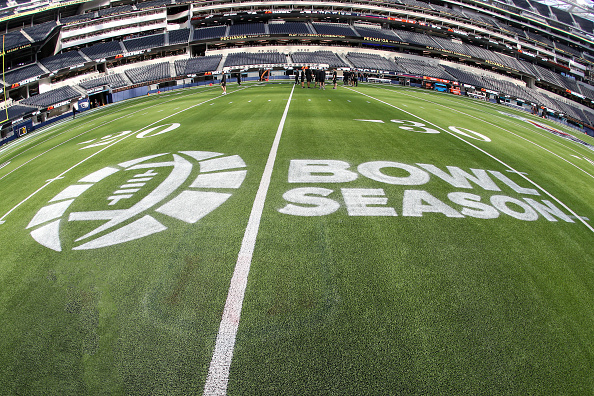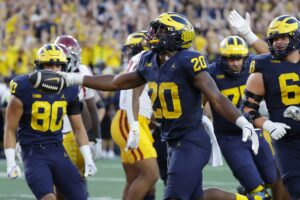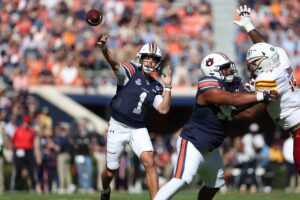Reimagining the Transfer Portal
Here at Last Word on Sports, we have routinely taken deeper looks at the issues that affect college football. We took an early look at the changing landscape of college football when the transfer portal was first opened. We also positioned ourselves on the cutting edge of name, image, and likeness benefits that would inure to student-athletes. Instead of just rehashing the debate over when NIL compensation was good or bad, we dove deep into the logistics. For example, we asked who would actually pay the athletes: schools or sponsors directly. Now that we have several years of transfer portal data, we can take another close look at that change. In this article, we are reimagining the transfer portal as it relates to college football based on that experience.
By The Numbers: Grass Is Not Usually Greener
We looked at the transfer portal data from recent years in a recent article. We only look to re-hash a small portion of that work here. Since the portal opened in October 2018 through the conclusion of the 2021 portal class in August 2021, over 2,200 football players from Power Five plus (Power Five plus Notre Dame and BYU) schools entered the portal. That resulted in an average of 11.2 transfers per year, per school.
Since August 2021, however, 860 Power Five plus players entered the portal through February 18 at 2:30 p.m., according to 247Sports’ database. This means that, though we are still over five months away from the close of the 2022 transfer portal class, each Power Five Plus school has lost an average of 13 players to the portal. As proof that the average is not just skewed by a few schools (like Indiana losing 30 to the portal), 31 of the 66 Power Five Plus schools lost 13 or more players to the portal since August 2021. That number will undoubtedly grow after Spring camps wrap up.
The data on where kids end up is obviously incomplete for the Class of 2022. For the prior three classes, however, we have a good sample size to work with. Just 26% of Power Five Plus football players who entered the portal made their way to another Power Five plus school. Of those who did, less than half of those made a significant impact at their new schools. Thus, the proof is out there. The grass is not usually greener on the other side of the portal.
The Portal Creates Logistics Problems
We predicted in our initial analysis of the transfer portal that the numbers would continue to grow rapidly. We reserved judgment at the time on whether the freedom to transfer was good or bad. At the end of the day, we do think that student-athletes should have the opportunity to change schools. There is very little difference between a student-athlete changing schools and a coach or assistant doing the same. Considering the average adult changes jobs at least a half-dozen times, it is certainly reasonable to anticipate the young athletes would prefer that same freedom. We do not express any reservation about that.
Nonetheless, the lack of any specificity or enforcement of the existing rules surrounding the portal does create certain logistical problems that leave things messy. As it stands now, there are no set time periods within which a player can enter the portal. If, for example, a player is unhappy with a team’s win-loss total or unhappy with playing time, that player can enter the portal mid-season without issue, leaving unexpected depth issues for those schools. It is, however, a real rarity, that an athlete completes the transfer process to a new home in that same season. Immediate eligibility is unlikely in those cases.
The NCAA already recognizes this issue in traditional high school and junior college recruiting cycles. There are dead periods, open periods, visit limitations, and hard-and-fast signing windows. If a school or recruit does not follow these timelines, there are specific consequences. Similarly, there are enrollment deadlines and eligibility requirements that all affected parties must follow. This injects certainty into the process, and that is perfectly rational. At the end of the day, we believe the portal requires a similar calendar.
Setting Timeframes for Non-Graduates in the Transfer Portal
Reimagining the transfer portal starts here. The NFL has a set free agency period. Teams cannot approach looming free agents outside of those windows. The NFL levies fines and strips teams of draft picks for violations of these rules. Though college football remains distinct from professional football, those distinction fade more each day. As they do, it makes sense to introduce certainty and uniformity in this arena.
Simply, the NCAA should set strict windows for transfers. Once a season begins, a player may not enter the portal until the conclusion of that season. After the CFP National Championship, the portal would accept entrants from non-graduate-transfers for a three-week period. No school (including any representative of that school or person acting on their behalf) shall be permitted to contact or accept contact from any other school’s athletes until after this period ends. No school shall use NIL compensation to induce a player to transfer.
After the portal closes to new entrants, schools have four weeks to contact and host players in the portal. Portal entrants may take four official visits. Those in the portal who intend to transfer to an NCAA-governed institution would have until March 1 to sign a letter of intent with the new school. If they sign before March 1, the player may compete in the next season. If they do not, the player must sit out next season. Each player may only utilize this procedure one time unless the player graduates. Then, the player may utilize this procedure (but using a different timeline) one more time after graduation.
Setting Timeframes for Graduate Transfers in the Portal
When reimagining the transfer portal, we also distinguish between graduate transfers and non-graduate transfers. Currently, the NCAA unevenly applies its rules for when a graduate transfer may receive immediately eligibility at his new school. The best way to create uniformity here is to allow all graduates with remaining athletics eligibility to enter the transfer portal within the applicable windows to play immediately with the athlete’s new school. Like non-graduate-transfers, this works best with strict time limitations. A graduate transfer meeting all graduation requirements by the end of the Fall semester may enter the portal in the same window as non-graduate transfers.
For graduate transfers meeting all graduation requirements by the end of the Spring semester, they have a different window. They may enter the portal beginning June 1, and the portal closes to new entrants on June 30. After June 30, schools have a four-week window to contact and host graduate transfer portal entrants. Those transfers must sign at their new schools by July 10. Similar to non-graduate transfers, no school may contact or accept contact from any other school’s athletes until the open period. No school shall use NIL compensation to induce a player to transfer (we cover this topic in a subsequent article reimagining NIL rules).
Unusual Situations
We understand fully that unusual situations sometimes arise that may require exceptions. The trouble with exceptions, unfortunately, is that they can be subject to abuses beyond their intent. As a result, the main situation we envision when reimagining the transfer portal is this. If a student-athlete suffers a changed circumstance due to unexpected health issues by a close family member, then we hate to see a player forced to make the tough choice between a year of eligibility and spending time with a dying family member. In this situation, we believe a student-athlete should have an option. First, the athlete can transfer outside of the windows above to one of the three-closest NCAA-governed schools outside of the above windows with immediate eligibility. Second, the athlete can refrain from transferring but would not lose the year of eligibility while spending time with a dying family member.
The player, however, must provide some evidence of the family member’s condition and that the condition was unexpected. To limit abuses of the rule, any player found making false representations to take advantage of this rule would be stripped of all remaining NCAA eligibility.
Strict Penalties For Violations
This leads into our final thoughts on reimagining the transfer portal. The stripping of remaining NCAA eligibility may seem severe. That said, in creating uniformity and preventing abuses, the windows and rules here must be enforced strictly. If a school, or anyone acting for the benefit of a school, reaches out to a student-athlete of another school outside of the windows above, then the offending school will face the loss of three scholarships for the next two recruiting years and will face a fine of $100,000.00 per student-athlete. The same penalties apply to schools using NIL compensation to induce a transfer to sign with their institution.
Rumors abound among many programs that blatant tampering occurs regularly. Coaching staffs have been clever enough, it seems, to make that tampering difficult to prove. They do it often through back channels. A former player or a booster or, now, an agent for a player receives contact. That contact results in communication that the school would offer the player once he enters the transfer portal. The player “just so happens” to transfer to the new school. For these situations, rules can be more difficult in application. In that instance, the schools should face a choice. Either they cooperate fully with an investigation into whether contact originated from a school or they suffer increased penalties (a larger fine and an extra year of scholarship losses).
Imperfect Solutions?
We can be sure that these thoughts have flaws. No system of governance that balances the need for uniformity, competitive balance, and the rights of student athletes can attain perfection. That said, we think that most fans agree that something more has to be done.
What is at stake? Well, the confluence of changes, for one, has introduced far more apathy from formerly passionate fans than we have seen in years. For players and programs trying to capitalize on the game of college football, it seems likely that their economic interests may be in jeopardy absent changes that keep fans engaged. We do not believe fans are “entitled” to control over the game. That said, when fans stop spending money supporting that game, there simply will not be much reason to even have these discussions.






